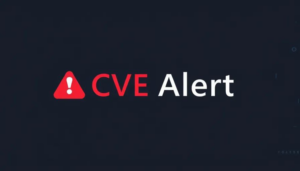CVE Alert: CVE-2025-9444 – 1000projects – Online Project Report Submission and Evaluation System
CVE-2025-9444
A vulnerability has been found in 1000projects Online Project Report Submission and Evaluation System 1.0. This issue affects some unknown processing of the file /admin/controller/delete_group_student.php. The manipulation of the argument batch_id leads to sql injection. The attack can be initiated remotely. The exploit has been disclosed to the public and may be used.
AI Summary Analysis
Risk verdict
High risk: remote, unauthenticated SQL injection with a publicly disclosed exploit; urgency to patch or mitigate now.
Why this matters
An attacker can potentially read or alter sensitive data and disrupt the application’s integrity without user interaction. The public availability of exploits raises the likelihood of automated probing and commodity tooling compromising deployments that expose the vulnerable input point.
Most likely attack path
Attacker sends crafted input to a web-facing endpoint that processes a user-supplied parameter, exploiting SQL injection without requiring credentials or user action. The impact scores indicate low to moderate breach of confidentiality, integrity, and availability, but exploitation is pre-authenticated and remote, enabling rapid data exposure or manipulation within the app’s database. Lateral movement is plausible only if the attacker gains database-level access or the app shares credentials with other systems.
Who is most exposed
Organisations hosting this web application and exposing administrative interfaces to the internet are most at risk, especially where public access to admin endpoints exists and input is not parameterised.
Detection ideas
- Web logs show unusual SQL syntax or error messages tied to the vulnerable parameter.
- Requests containing anomalous or repeatedly crafted input strings targeting the endpoint.
- Sudden spikes in 500/502 errors or increased DB query latency.
- Unusual data access patterns or unexpected data volumes from the application DB.
- WAF alerts for SQLi patterns on the affected endpoint.
Mitigation and prioritisation
- Patch or upgrade to fixed/versioned release; if unavailable, apply robust input validation and parameterised queries at the source.
- Implement web application firewall rules to block SQLi payloads against the endpoint and log all attempts.
- Disable or tightly restrict remote admin access; enforce least privilege for DB accounts used by the application.
- Apply network segmentation and monitoring; collect and alert on anomalous DB activity from the app tier.
- Change-management: treat as high priority; if KEV is known or EPSS ≥ 0.5, designate as priority 1. Data here lacks KEV/EPSS details.
A considerable amount of time and effort goes into maintaining this website, creating backend automation and creating new features and content for you to make actionable intelligence decisions. Everyone that supports the site helps enable new functionality.
If you like the site, please support us on “Patreon” or “Buy Me A Coffee” using the buttons below
To keep up to date follow us on the below channels.

![[Palo Alto Networks Security Advisories] CVE-2025-4614 PAN-OS: Session Token Disclosure Vulnerability 1 Palo_Alto_Networks_Logo](https://www.redpacketsecurity.com/wp-content/uploads/2025/02/Palo_Alto_Networks_Logo-300x55.png)

